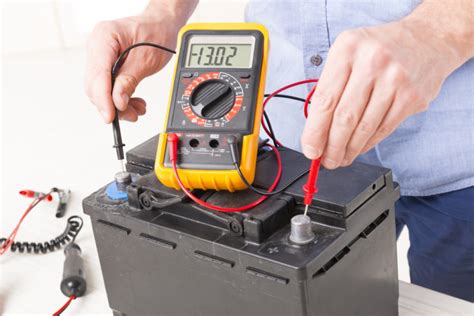How To Test If Battery Cables Are Bad
Ronan Farrow
Apr 02, 2025 · 3 min read

Table of Contents
How to Test if Your Battery Cables Are Bad
Car battery cables are essential for starting your vehicle. Over time, these cables can corrode, become loose, or even break, leading to starting problems or even complete engine failure. Knowing how to test your battery cables is a crucial DIY skill that can save you time, money, and potential roadside frustration. This guide will walk you through several methods to determine if your battery cables are the culprit behind your car troubles.
Visual Inspection: The First Line of Defense
Before diving into more technical tests, always start with a thorough visual inspection. This simple step can often identify obvious problems.
What to Look For:
- Corrosion: Look closely at the battery terminals and the cable clamps. White, green, or blue powdery residue is a clear sign of corrosion. This corrosion restricts current flow, hindering the battery's ability to power the starter motor.
- Loose Connections: Check if the cables are securely fastened to both the battery terminals and the engine block. Loose connections create high resistance and prevent proper current flow. Wiggle the cables gently; if they move easily, they're likely loose.
- Damaged Insulation: Examine the cable insulation for any cracks, cuts, or fraying. Damaged insulation can expose the internal wiring, leading to shorts and electrical problems.
- Physical Damage: Look for any signs of bending, kinking, or melting of the cables. This indicates potential internal damage that could compromise the cable's conductivity.
Testing for Voltage Drop: A More Precise Method
If your visual inspection doesn't reveal any obvious issues, you can use a multimeter to test for voltage drop. This method is more precise and can help pinpoint less visible problems.
What You'll Need:
- Multimeter: A basic multimeter is sufficient for this test.
- Test Leads: Ensure your multimeter's test leads are in good condition.
How to Perform the Test:
- Connect the Multimeter: Set your multimeter to measure DC voltage. Connect the red lead to the positive (+) terminal of the battery and the black lead to the positive (+) cable clamp.
- Start the Engine: Have someone crank the engine while you observe the multimeter reading.
- Check the Reading: A voltage drop of more than 0.5 volts indicates a problem with the positive cable. Repeat the test on the negative (-) cable.
A significant voltage drop indicates excessive resistance in the cable, meaning it may be damaged or corroded internally.
Cleaning Corroded Cables: A Potential Solution
If you find corrosion, cleaning the cables and terminals is crucial. However, simply cleaning them won't fix internally damaged cables.
How to Clean:
- Disconnect the Cables: Before cleaning, always disconnect the negative (-) cable first, followed by the positive (+) cable.
- Use a Wire Brush: Use a wire brush to clean the corrosion from the terminals and cable clamps.
- Baking Soda Paste (Optional): A paste of baking soda and water can help neutralize the acid in the corrosion.
- Reconnect the Cables: After cleaning, reconnect the cables, ensuring tight connections.
When to Replace Your Battery Cables
If you've performed the tests and found significant voltage drops, damage to the cable insulation or persistent corrosion despite cleaning efforts, it's time to replace your battery cables. Don't compromise your vehicle's electrical system—replace faulty cables promptly. Always remember safety first when working with car batteries and electrical components.
This comprehensive guide should provide you with the necessary knowledge to effectively test your battery cables. Remember that regular maintenance and timely replacements can prevent major car issues and keep your vehicle running smoothly.
Featured Posts
Also read the following articles
| Article Title | Date |
|---|---|
| How To Remove Beggars Lice From Clothes | Apr 02, 2025 |
| How To Read Neptune T 10 Water Meter | Apr 02, 2025 |
| How To Travel To Balabac Palawan | Apr 02, 2025 |
| How To Restore A Cedar Chest | Apr 02, 2025 |
| How To Start A Hosa Chapter | Apr 02, 2025 |
Latest Posts
-
How Are Little League All Stars Chosen
Apr 03, 2025
-
How Are Liquid Diamonds Made
Apr 03, 2025
-
How Are Laundry Detergent Sheets Made
Apr 03, 2025
-
How Are Corsets Supposed To Fit
Apr 03, 2025
-
How Are Coogi Sweaters Made
Apr 03, 2025
Thank you for visiting our website which covers about How To Test If Battery Cables Are Bad . We hope the information provided has been useful to you. Feel free to contact us if you have any questions or need further assistance. See you next time and don't miss to bookmark.
